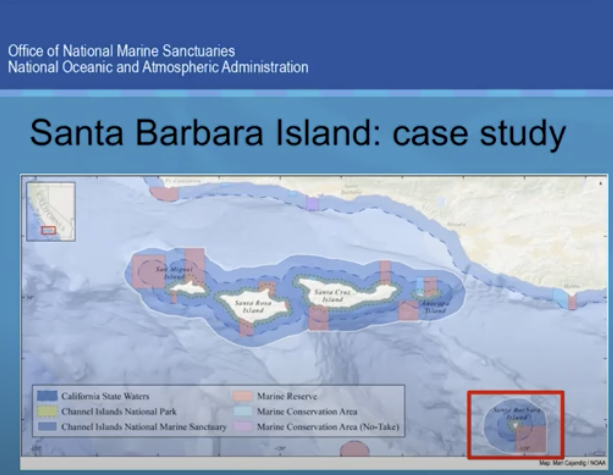Once abundant on rocky reefs across southern California and Central Baja California, Giant Sea Bass (Stereolepis gigas) populations have been greatly reduced due to fishing pressure and habitat loss. The population has been steadily recovering since being placed under state protection in California in the 1970s but we have limited understanding of their behavior and role in the kelp forest ecosystem. This study uses acoustic telemetry to track S. gigas at Santa Barbara Island, a remote island offshore of Los Angeles, California. Evidence suggests that these large, piscivorous fish, aggregate for foraging and reproductive success and our work shows these fish have small home ranges and high site fidelity for specific coastal areas. However, individuals are also capable of long distance movements as tagged fish have moved from Santa Catalina Island to the northern Channel Islands (over 130 km). Data on timing and frequency of these two scales of movement patterns is fundamental to understanding their ecology and natural history, and for exploring mechanisms affecting individual and population-level processes as S. gigas begins to recover.

The presentation embedded above was given by Pike Spector at the 2020 annual meeting of the Western Society of Naturalists. Pike is a marine biologist and 2019 California Sea Grant Fellow with Channel Islands National Marine Sanctuary.